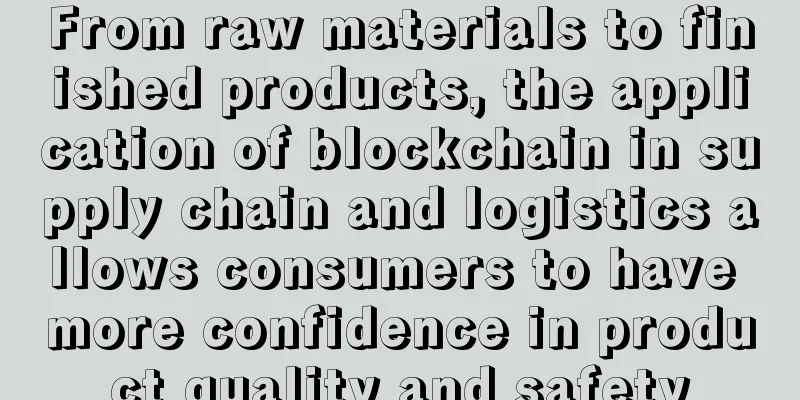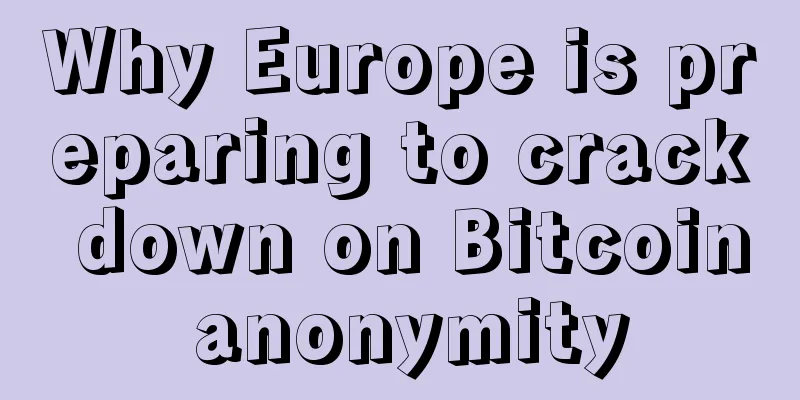From raw materials to finished products, the application of blockchain in supply chain and logistics allows consumers to have more confidence in product quality and safety

|
The search for use cases for blockchain technology in various industries and the benefits that this technology can bring to some unexpected application areas has never stopped. One of the business areas that blockchain is believed to help improve is supply chain and logistics. Similar to the financial services industry, in the supply chain and logistics industry, blockchain technology has great potential to improve transparency. In industries that require vast supply chains to distribute products seamlessly, modern business models often hide the web behind store shelves. As a result, for most products consumed on a daily basis, consumers do not have a convenient way to track product logistics and understand where the goods come from and where they go before reaching the customer. As industry professionals point out, we know very little about most of the products we use every day. Between us and the products we use is an almost incomprehensible network of retailers, distributors, transporters, storage facilities and suppliers. And all the participants in this complex network are almost hidden behind the consumer, who only enjoys the end result of the product design, production, delivery and sales process. One of the industries that is expected to benefit the most from a consumer perspective is the food industry. Unfortunately, history is not lacking in examples that demonstrate large-scale contamination problems in the food chain due to poor management and control of suppliers and other factors related to the product reaching the consumer. The recent Mexican pepper food contamination crisis, the Chinese tainted milk scandal and many other cases have demonstrated the need for changes to tighten control and improve transparency of the supply chain system. Companies like Everledger and Ascribe are providing solutions to combat counterfeiting in the diamond and digital art industries, while in the food industry there is Provenance, a very fascinating project working to create transparent supply chains throughout the product lifecycle for all types of products. Supply Chain Authentication on the Blockchain Provenance is working to bring transparency to the supply chain by implementing supply chain certification on the blockchain. "We offer an alternative to the certification and custody challenges of sustainable supply chains: a system that assigns and verifies certification of certain attributes of physical products; for example, organic or fair trade. We profile a model of various materials and components from the initial product through manufacturing and assembly to the end customer." "At each point in time, our prototype model details four key attributes about all materials and supplies: nature (what it is), quality (how it is), quantity (how much of it is) and ownership (who it belongs to). Key attributes can be read and linked from pre-existing datasets, such as barcodes." The company says that each step of this supply chain, engraved on the blockchain, allows for the secure audit of all transactions, validating the final state of existence, for example, checking the unbroken chain of custody from raw materials to final sale. Given the complexity of the network responsible for stocking stores, transparency at every step is important for every participant involved. Provenance gives an example of a system that has 6 types of participants in the blockchain.
Any organization seeking to explore a specific step to perform a quality assessment can review this network, and each step is audited by the relevant implementation party. Each step requires a specific type of data to be registered on the ledger. For example, in the case of a manufacturer, participants would be asked to enter data on the amount of raw materials used for production. Enhance brand value and strengthen control over the business and customers Professionals believe that there are many benefits to integrating supply chain processes into blockchain in an immutable manner, which can be summarized as: enhanced transparency, higher scalability, better security and increased innovation adoption. The series of steps taken by the many players can be effectively put into one system, readily accessible to consumers and regulators. This not only helps to increase brand value as a thoughtful aspect of consumer risk, but also gives companies greater control over the process, providing better visibility into supplier and product quality. For consumers, being able to see where products come from and the raw material sourcing process provides an opportunity to improve consumer and use products, and in the long run, can have a profound and positive impact on medical needs. |
<<: Ukraine to partner with blockchain firm to prevent corruption
>>: How to prove my mother is my mother? A comic book explains Bitcoin blockchain technology!
Recommend
Is it better to have a mole on the chest or on the back?
As the saying goes: Aim high. People with moles o...
Is it good for a woman to have thin eyebrows?
Some people have thin eyebrows, some have thick e...
The personality of people with straight eyebrows and their coping strategies in the market
Straight eyebrows are eyebrows that look like the...
Bitcoin company Coinbase plans to expand into Asia and Latin America next year
Coinbase is looking to expand its bitcoin trading...
What does peach blossom mole represent?
Moles often accompany people throughout their liv...
Physiognomy teaches you how to choose friends by looking at their eyes
Physiognomy teaches you how to choose friends by ...
F2pool BFC (Bitfree Cash) Mining Tutorial
Bitcoin Free Cash (BFC for short) is a new crypto...
What does a woman with thick lips represent? What does a woman with thick lips represent?
A person's character can be seen from his lip...
Which moles can tell a person's wealth and fortune?
Everyone's fortune and luck in life are alrea...
Revealing the secrets of what kind of face makes men prone to divorce
No one wants to go down the path of divorce. Afte...
The Central Bank's Digital Currency Research Institute has set up science and technology innovation centers in many places
Recently, the Nanjing Fintech Research and Innova...
Where will Bitcoin go if global stock and oil markets fall further?
Stock and oil markets extended losses to fresh lo...
What does a mole on the right ankle mean?
Moles are sometimes like naughty children that gr...
A man who has the ability to make money
1. Bright eyes Bright eyes represent a smart mind...
What does a woman's left eye look like, with a big right eye?
What does it look like for a woman with a big lef...









